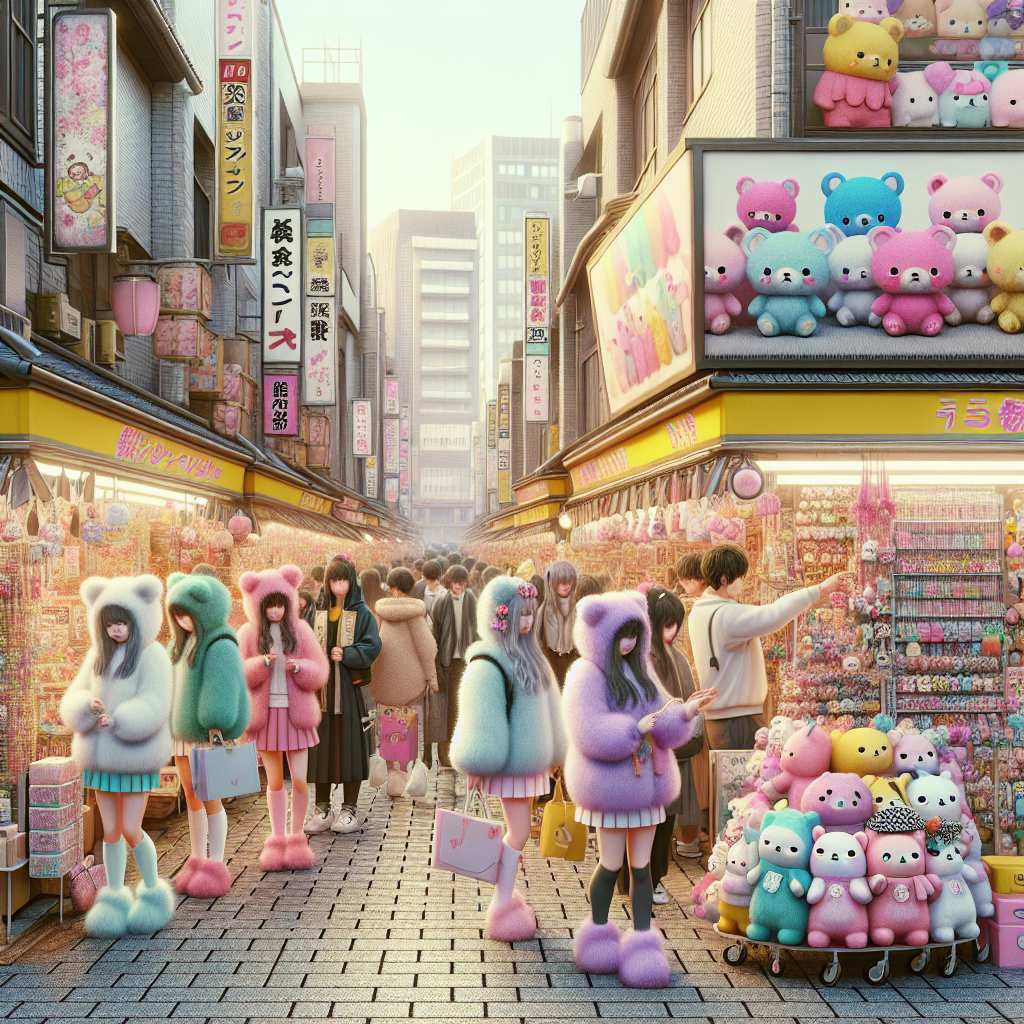Kawaii Culture: Delving into Japan’s World of Cute
In the heart of Japan’s bustling streets and amidst its rich historical tapestry thrives a culture so uniquely captivating, it has transcended geographical boundaries to influence global trends. This is the world of Kawaii culture, a phenomenon centered around all things cute, adorable, and endearing. The term ‘Kawaii,’ which directly translates to ‘cute’ in English, is more than just an adjective in Japan; it’s a cultural movement that has shaped aspects of lifestyle, fashion, art, and even social interactions. Here, we delve into the origins, manifestations, and global impact of Kawaii culture, uncovering the layers behind Japan’s world of cute.
Origins of Kawaii Culture
Tracing the origins of Kawaii culture leads us back to the 1970s, although its roots may be even deeper, intertwined with Japan’s long-standing appreciation for simplicity and minimalism as seen in traditional arts. The Kawaii aesthetic, however, started gaining momentum with the youth, initially through rebellious tweaks to school uniforms and the proliferation of cute, hand-written letters using uniquely styled characters. This movement was not just about fashion or style; it was a form of self-expression and escape from societal pressures, embodying innocence and youthfulness.
Manifestations of Kawaii Culture
Kawaii culture manifests in numerous forms across Japan, permeating every aspect of life. Here are some notable examples:
1. Fashion: Harajuku, a district in Tokyo, is often considered the epicenter of Kawaii fashion. Here, styles like Lolita, Fairy Kei, and Decora showcase the extreme ends of Kawaii, with pastel colors, elaborate accessories, and layers of frills.
2. Characters and Mascots: Japan is home to iconic Kawaii characters like Hello Kitty, Pikachu, and Totoro. These characters are not just popular among children; they hold a nostalgic, cherished place in the hearts of adults as well. Furthermore, municipalities and police departments across Japan have their own Kawaii mascots, known as Yuru-chara, for public engagement and tourism promotion.
3. Cafés and Food: Kawaii culture extends into cuisine, with themed cafés and meticulously designed dishes that are too cute to eat. Character cafés, maid cafés, and even animal cafés offer immersive experiences that are quintessentially Kawaii.
4. Stationery and Goods: From notebooks to pens, and every conceivable office or school supply, Kawaii designs dominate. These items often feature popular characters or whimsical themes, making everyday tasks a little brighter.
Global Impact
Kawaii culture has not remained confined to Japan; its appeal has spread worldwide. International fashion and lifestyle brands have incorporated Kawaii elements into their products, and artists and designers globally draw inspiration from its aesthetic. Social media platforms have further fueled the Kawaii movement, allowing people to share their creations, fashion, and collections with a global audience. This cross-cultural exchange has led to the fusion of Kawaii with other aesthetic movements, creating a vibrant global community of fans and creators.
Understanding the Appeal
What draws people to Kawaii culture? At its core, Kawaii emphasizes positivity, escapism, and the celebration of youth and innocence. It provides an avenue for self-expression and identity exploration in a world that often values conformity. Additionally, the global resonance of Kawaii culture suggests a universal appeal to the human inclination towards things that evoke care, protection, and joy.
Future of Kawaii Culture
As society evolves, so does Kawaii culture, adapting to new trends and technologies. The digital age has seen the rise of virtual Kawaii idols and influencers, and advancements in technology have given birth to interactive Kawaii experiences, blending the physical and digital worlds. As long as there is a desire for escapism, self-expression, and the pursuit of joy, Kawaii culture will continue to thrive and evolve, both within Japan and beyond its borders.
FAQs About Kawaii Culture
1. Is Kawaii culture only popular among young people?
While Kawaii culture is especially popular among the youth, its appeal spans all age groups. Many adults participate in and enjoy Kawaii culture, finding nostalgia and joy in its various manifestations.
2. Can Kawaii culture be found outside of Japan?
Yes, Kawaii culture has a global presence. From fashion and art to themed cafés and conventions, Kawaii has influenced various aspects of global culture.
3. Is Kawaii culture superficial?
While Kawaii culture emphasizes cuteness and aesthetic appeal, it also embodies deeper values of kindness, care, and community. It provides a means for self-expression and identity exploration, making it more than just a superficial trend.
4. How do I participate in Kawaii culture?
You can start by incorporating Kawaii elements into your daily life, whether through fashion, art, or even your living space. Engaging with the community through social media and attending events or conventions are also great ways to immerse yourself in Kawaii culture.
5. Does embracing Kawaii culture require knowing Japanese?
While knowing Japanese can enhance your appreciation and understanding of Kawaii culture, it’s not a prerequisite. The visual and universal appeal of Kawaii transcends language barriers, making it accessible to everyone.
In conclusion, Kawaii culture is a testament to Japan’s influence on the global stage, offering a unique blend of aesthetics, self-expression, and nostalgia. As it continues to evolve and inspire, Kawaii culture reinforces the idea that, in a world often dominated by serious and pragmatic concerns, there’s always room for a bit of cute.
